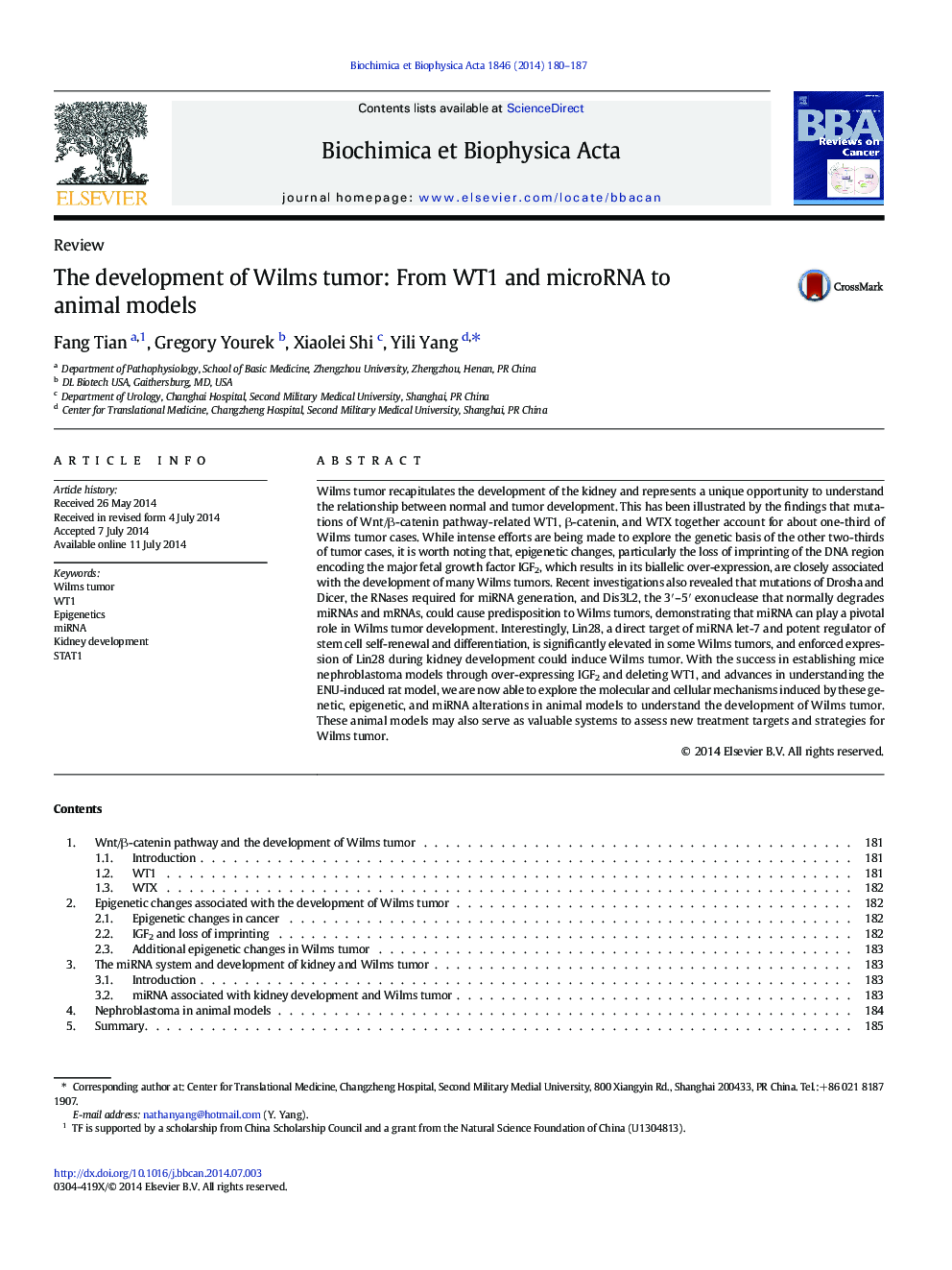| Article ID | Journal | Published Year | Pages | File Type |
|---|---|---|---|---|
| 10895599 | Biochimica et Biophysica Acta (BBA) - Reviews on Cancer | 2014 | 8 Pages |
Abstract
Wilms tumor recapitulates the development of the kidney and represents a unique opportunity to understand the relationship between normal and tumor development. This has been illustrated by the findings that mutations of Wnt/β-catenin pathway-related WT1, β-catenin, and WTX together account for about one-third of Wilms tumor cases. While intense efforts are being made to explore the genetic basis of the other two-thirds of tumor cases, it is worth noting that, epigenetic changes, particularly the loss of imprinting of the DNA region encoding the major fetal growth factor IGF2, which results in its biallelic over-expression, are closely associated with the development of many Wilms tumors. Recent investigations also revealed that mutations of Drosha and Dicer, the RNases required for miRNA generation, and Dis3L2, the 3â²-5â² exonuclease that normally degrades miRNAs and mRNAs, could cause predisposition to Wilms tumors, demonstrating that miRNA can play a pivotal role in Wilms tumor development. Interestingly, Lin28, a direct target of miRNA let-7 and potent regulator of stem cell self-renewal and differentiation, is significantly elevated in some Wilms tumors, and enforced expression of Lin28 during kidney development could induce Wilms tumor. With the success in establishing mice nephroblastoma models through over-expressing IGF2 and deleting WT1, and advances in understanding the ENU-induced rat model, we are now able to explore the molecular and cellular mechanisms induced by these genetic, epigenetic, and miRNA alterations in animal models to understand the development of Wilms tumor. These animal models may also serve as valuable systems to assess new treatment targets and strategies for Wilms tumor.
Related Topics
Life Sciences
Biochemistry, Genetics and Molecular Biology
Cancer Research
Authors
Fang Tian, Gregory Yourek, Xiaolei Shi, Yili Yang,
